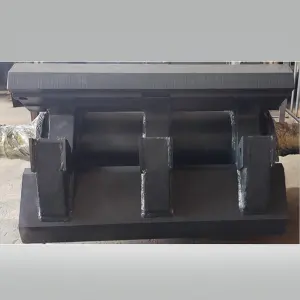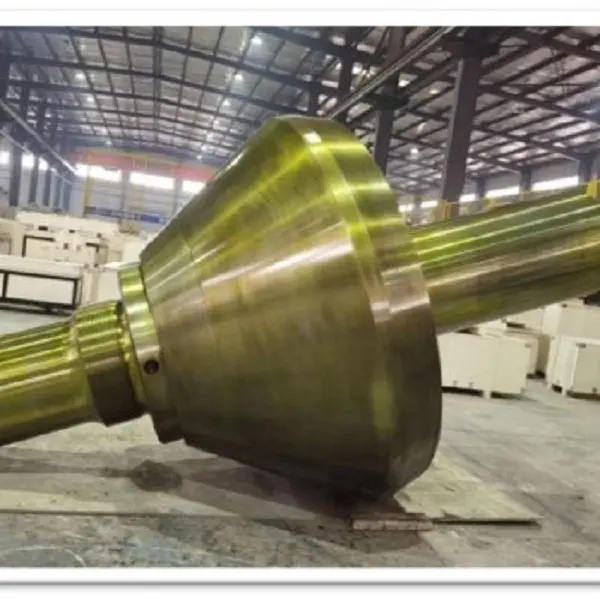In the mining, aggregate and building materials industries, the drive for higher processing capacity and operational efficiency has never ceased. An obvious trend is that crushing equipment is developing rapidly towards a larger scale and higher production capacity. However, as the size and power of the equipment keep pushing the limits, the load and challenges that its core structural components, such as rotors and frames, bear also increase exponentially. This is no longer a simple size increase, but a profound revolution in materials science, structural mechanics and manufacturing processes.
First, statics challenge: When weight is no longer the only consideration
In traditional concepts, increasing the thickness of materials seems to be a direct way to deal with greater loads. However, in the context of large-scale equipment, unnecessarily increasing weight not only significantly raises manufacturing costs and transportation difficulties, but also has a chain of negative impacts on the equipment foundation, bearing system and energy consumption.
For racks, the new requirement lies in achieving a balance between “high strength and lightweight”. This means that the design must undergo topological optimization through finite element analysis (FEA), like a sculptor, strengthening the tendons and bones in areas with stress concentration and precisely “subtracting” in areas with low stress. The resulting reinforcement rib layout and plate thickness distribution are data-driven results rather than empirical guesses. Meanwhile, the welding of large racks is no longer merely about connection but has become a systematic project. The fundamental way to prevent weld fatigue cracks under huge alternating loads is to adopt advanced processes such as narrow gap bevel welding and implement strict full-process stress relief treatment.
Second, the dynamic revolution: The rotor, the beating heart, requires ultimate balance
The rotor is the power core of the crusher. In large-scale equipment, the diameter and weight of the rotor have significantly increased, and the linear velocity and kinetic energy during its operation have also reached new orders of magnitude. Even the slightest mass eccentricity will be amplified into a huge centrifugal force under high-speed rotation, causing severe vibration of the entire machine. This not only affects the service life of the bearings but also threatens the stability of the entire production line.
Therefore, the requirements for large rotors have reached an almost exacting level. It must undergo multi-plane dynamic balancing correction to keep the residual unbalance at a level far above the standard grade (such as G6.3 grade). This requires that the rotor body structure have extremely high initial symmetry, and the assembly accuracy of key components such as hammer discs and hammer shaft holes on it must be calculated in units of “threads”. In addition, the structural design of the rotor needs to avoid stress concentration. The treatment of keyways and transition fillets requires fatigue life analysis to verify whether they can withstand more than millions of impact cycles.
Third, the evolution of materials science: The ultimate defense line against fatigue and impact
The failure mode of the core structural components of large-scale equipment is often not a one-time fracture, but rather the result of the combined effect of long-term fatigue damage and abrasive wear. This means that choosing the right materials is the cornerstone of all designs.
For rotors, using only traditional high manganese steel is no longer sufficient to cope with all working conditions. For different crushed materials (such as high-silicon basalt or high-hardness iron ore), it is necessary to match different grades of alloy steel and ultra-high chromium cast iron, and obtain the best strength and toughness ratio through modulation heat treatment. For the frame, high-strength low-alloy steel is used in the key load-bearing areas. This not only ensures excellent welding performance but also provides a higher yield strength, guaranteeing the stability of the entire machine structure from the source.
Fourth, the full life cycle perspective: Reliability is everything
In large-scale projects, the cost of unexpected equipment shutdowns is huge. Therefore, the evaluation criteria for core structural components are shifting from “initial performance” to “full life cycle reliability”.
This is reflected in the details: Has the surface of the rotor shaft sleeve adopted supersonic thermal spraying technology to form a wear-resistant layer to protect the more valuable main shaft? Is there a scientific condition monitoring sensor interface designed on the rack to facilitate real-time monitoring of stress and vibration data? Is the interior of the structure convenient for inspection and maintenance, avoiding large-scale disassembly due to the replacement of a small component?
These considerations have upgraded the core structural components from mere “parts” to key “assets” that affect the operational efficiency and profitability of customers.
The large-scale development of equipment is an ultimate test of the limit capabilities of core structural components. It demands that manufacturers not only possess strong processing capabilities, but also have a profound foundation in mechanical analysis, knowledge of materials science, and a deep understanding of working conditions. Selecting these core components is no longer a simple procurement process; rather, it is about choosing a powerful and reliable heart and skeleton for your heavy equipment. In this era of giant development, only by making no compromise on the infrastructure can a future of continuous and efficient operation be supported.
Post time: Oct-17-2025


